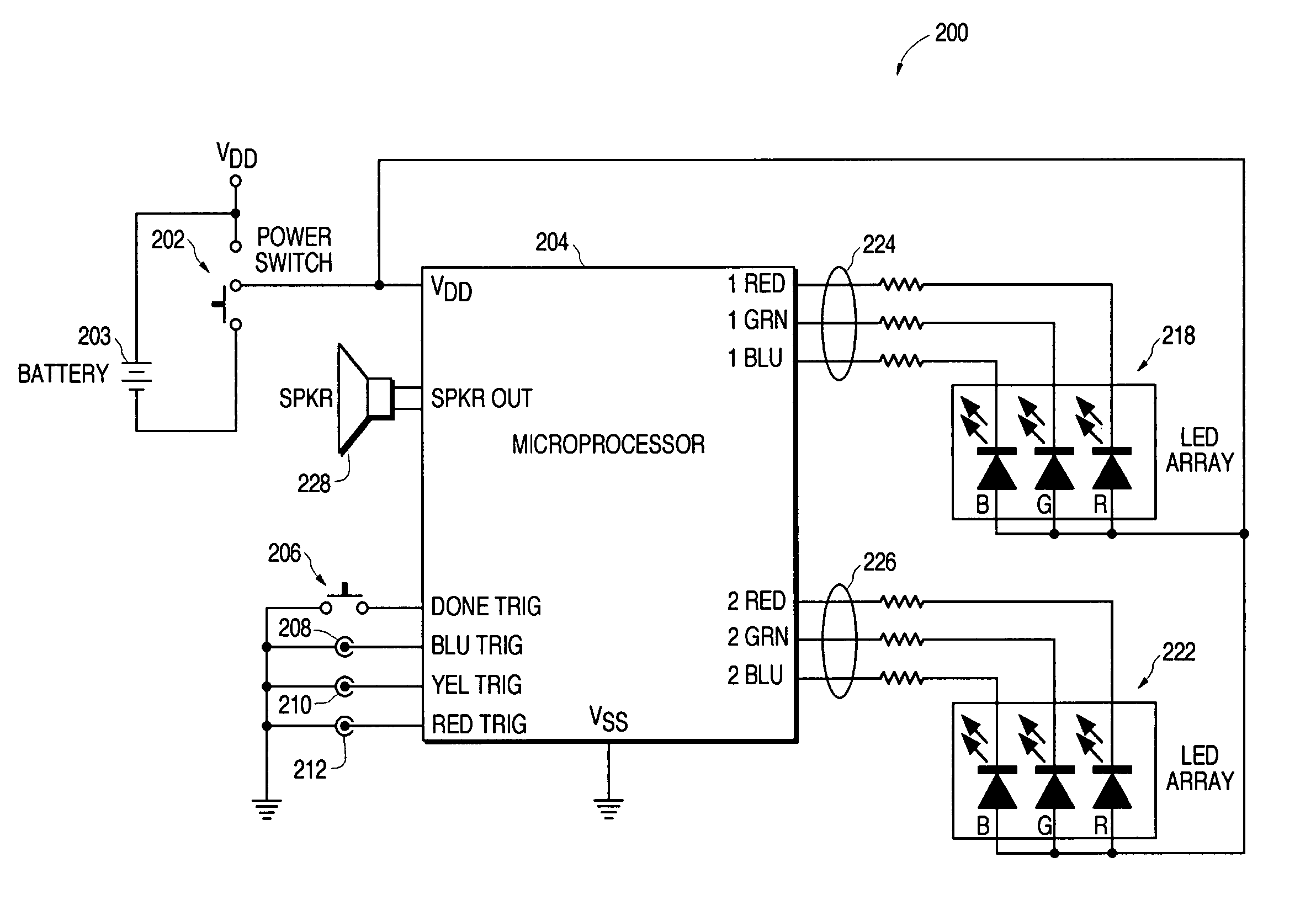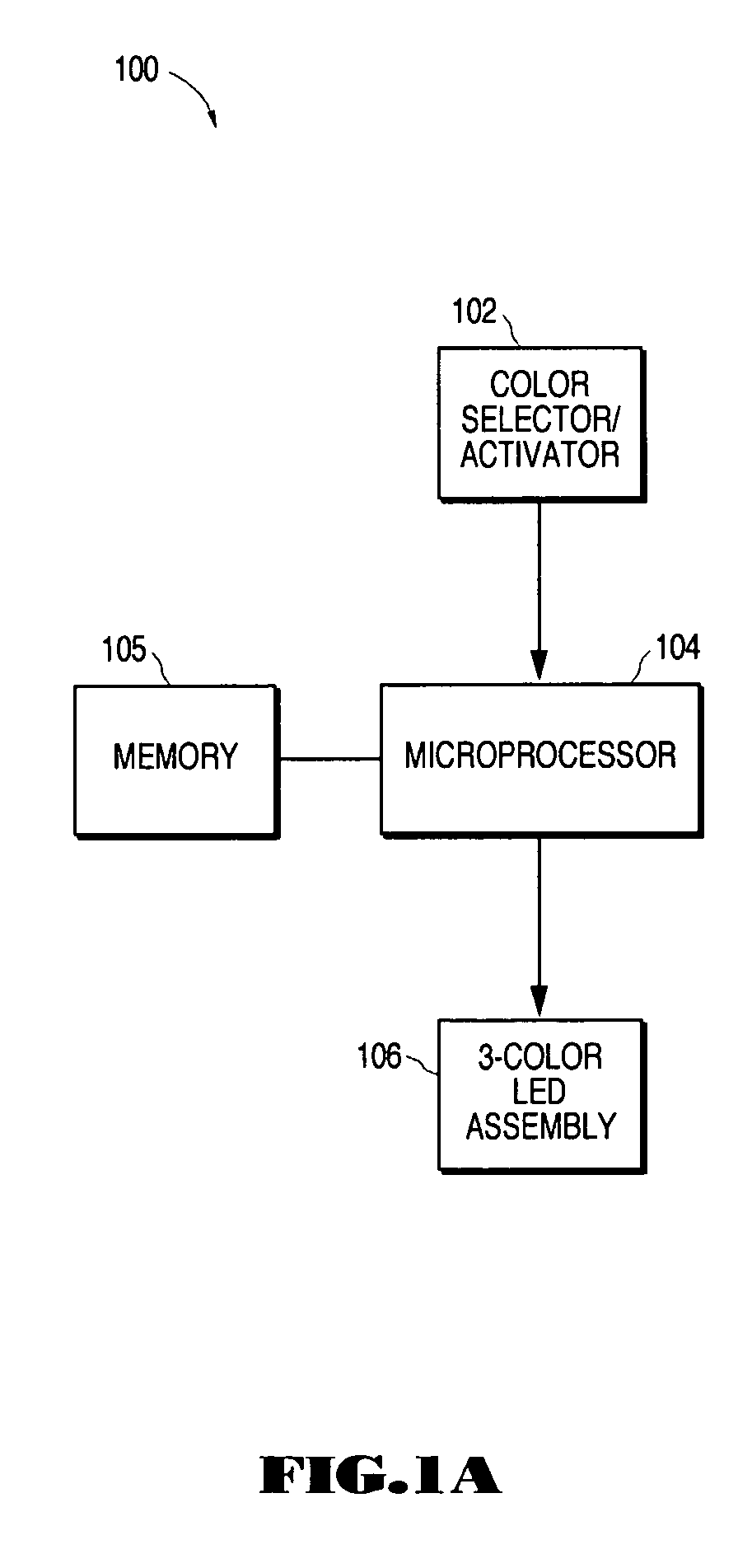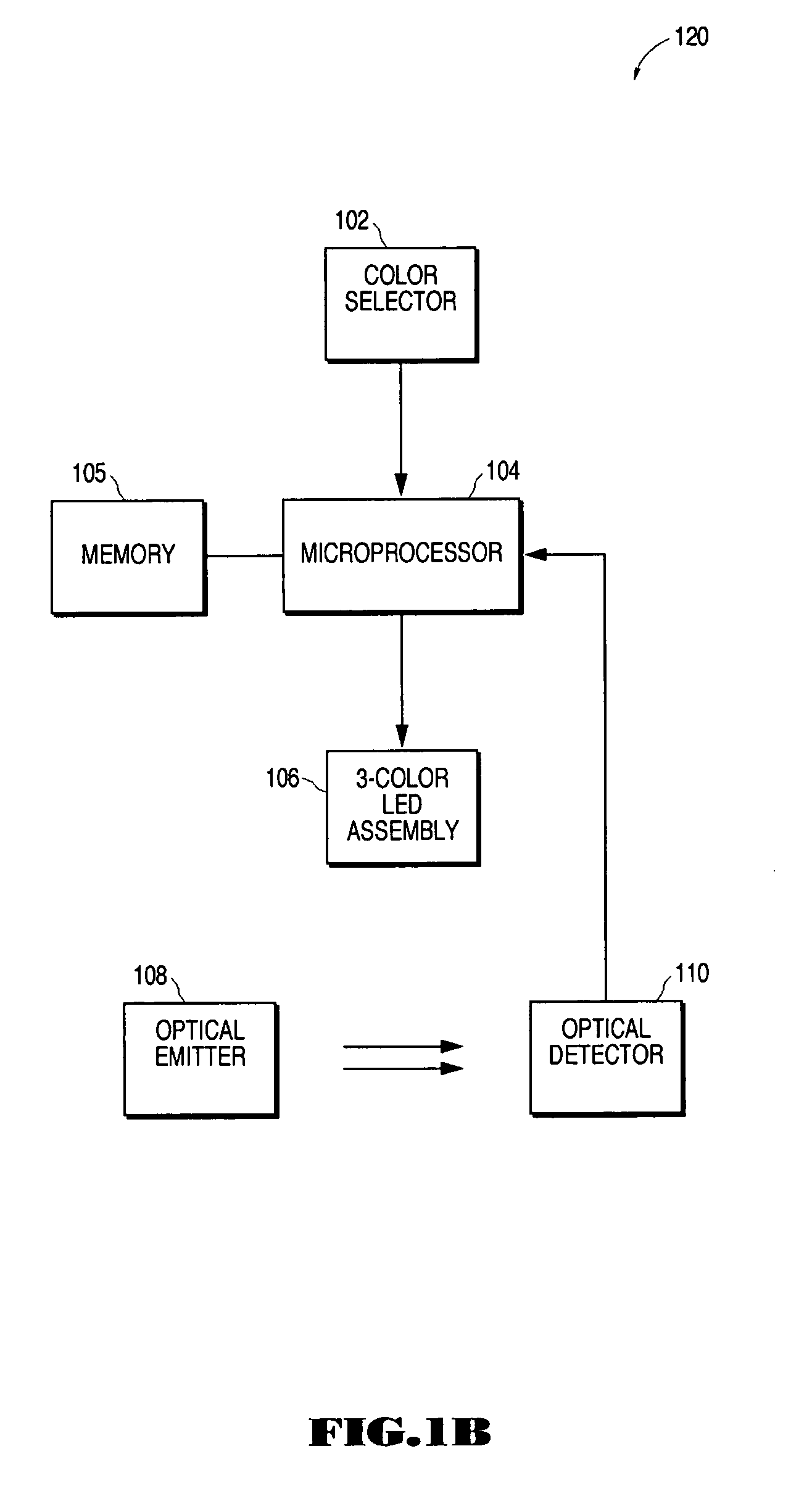Control interface for converting subtractive color input to additive primary color output
a control interface and input color technology, applied in the field of light-emitting diode arrays, can solve the problem that the user cannot use the subtractive primary spectrum of red/yellow/blue to mix colored lights, and achieve the effect of enriching lighted-color applications
- Summary
- Abstract
- Description
- Claims
- Application Information
AI Technical Summary
Benefits of technology
Problems solved by technology
Method used
Image
Examples
Embodiment Construction
[0021] An interface for converting color input selected from a first primary color spectrum to output generated by a light array of a second primary color spectrum is described. In the following description, for purposes of explanation, numerous specific details are set forth in order to provide a thorough understanding of the present invention. It will be evident, however, to one of ordinary skill in the art, that the present invention may be practiced without these specific details. In other instances, well-known structures and devices are shown in block diagram form to facilitate explanation. The description of preferred embodiments is not intended to limit the scope of the claims appended hereto.
[0022] Aspects of the present invention may be implemented by one or more computer or embedded microprocessor systems executing software instructions. According to one embodiment of the present invention, the steps of accessing, downloading, and manipulating the data, as well as other a...
PUM
 Login to View More
Login to View More Abstract
Description
Claims
Application Information
 Login to View More
Login to View More - R&D
- Intellectual Property
- Life Sciences
- Materials
- Tech Scout
- Unparalleled Data Quality
- Higher Quality Content
- 60% Fewer Hallucinations
Browse by: Latest US Patents, China's latest patents, Technical Efficacy Thesaurus, Application Domain, Technology Topic, Popular Technical Reports.
© 2025 PatSnap. All rights reserved.Legal|Privacy policy|Modern Slavery Act Transparency Statement|Sitemap|About US| Contact US: help@patsnap.com



